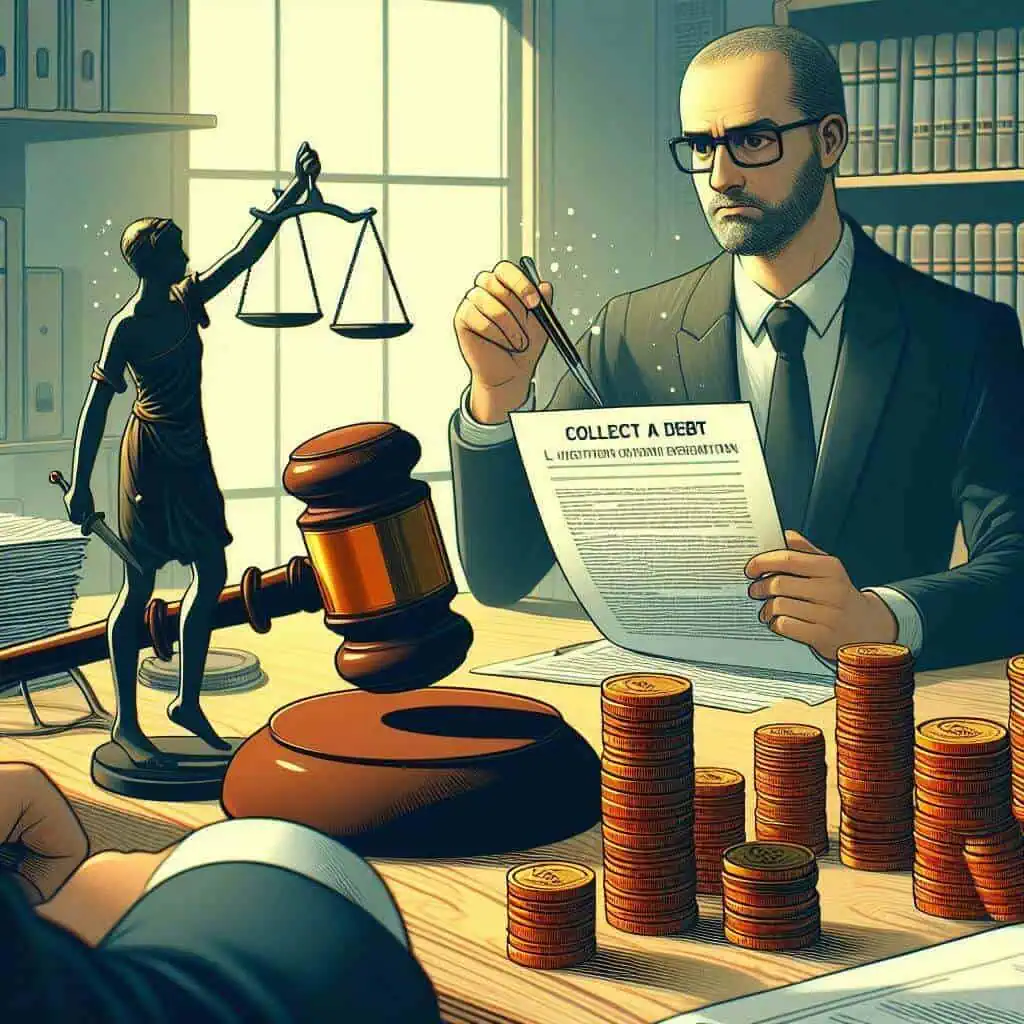This article discusses the effect of withdrawal of a partner from a partnership or joint venture.
When a Partner Withdraws from a Partnership
Business partnerships and joint ventures, even amongst the very best of friends, sometimes turn sour. Relationships can turn sour, and worse, end, even in the middle of business dealings. Communication is the key to any successful partnership. The more open you are with your partner, the more likely it will be for them to overcome any obstacle. If you don’t have this communication between each other, then what’s the point of being partners? This is why it’s so important that if one partner decides they want out of the business, there must be an agreement in place on how the exit process will take place.
The issue arises where there is no agreement in place when one of the partners withdraws from the joint partnership business or joint venture. If no such agreement is in place, the law steps in to determine the rights of the parties to the partnership business.
As will be explained below, the withdrawal of a partner from a partnership will result to the dissolution of such existing partnership business relations.
What Provisions of Law Govern the Withdrawal of a Partner
Art. 1828 of the Civil Code states that dissolution of a partnership is the change in the relation of the partners caused by any partner ceasing to be associated in the carrying on as distinguished from the winding up of the business. On the other hand, Art. 1830 and 1840 provide for causes of dissolution of a partnership.
It is noteworthy that any change in the membership of a partnership, either by the death[1], retirement or withdrawal of a partner[2], or by the admission of new members into the partnership[3], produces generally an immediate dissolution of the existing partnership relation, and the formation of a new one.[4]
Changes in Membership Cause the Dissolution of a Partnership
In the case of Benjamin Yu vs. National Labor Relations Commission[5], the Supreme Court agreed with the resolution of the public respondent that the legal effect of the changes in the membership of the partnership was the dissolution of the old partnership and the emergence of a new one, thus:
“In respect of the first issue, we agree with the result reached by the NLRC, that is, that the legal effect of the changes in the membership of the partnership was the dissolution of the old partnership which had hired petitioner in 1984 and the emergence of a new firm composed of Willy Co and Emmanuel Zapanta in 1987.
The applicable law in this connection — of which the NLRC seemed quite unaware — is found in the Civil Code provisions relating to partnerships. Article 1828 of the Civil Code provides as follows:
Art. 1828. The dissolution of a partnership is the change in the relation of the partners caused by any partner ceasing to be associated in the carrying on as distinguished from the winding up of the business. (Emphasis supplied)
Article 1830 of the same Code must also be noted:
Art. 1830. Dissolution is caused:
(1) without violation of the agreement between the partners;
x x x x x x x x x
(b) by the express will of any partner, who must act in good faith, when no definite term or particular undertaking is specified;
x x x
(2) in contravention of the agreement between the partners, where the circumstances do not permit a dissolution under any other provision of this article, by the express will of any partner at any time;
x x x
In the case at bar, just about all of the partners had sold their partnership interests (amounting to 82% of the total partnership interest) to Mr. Willy Co and Emmanuel Zapanta. The record does not show what happened to the remaining 18% of the original partnership interest. The acquisition of 82% of the partnership interest by new partners, coupled with the retirement or withdrawal of the partners who had originally owned such 82% interest, was enough to constitute a new partnership.” [Emphasis supplied.]
Death of a Partner Dissolves a Partnership
In the older case of Manuel G. Singsong vs. Isabela Sawmill[6], the Supreme Court pronounced, in the passing, that the partnership was technically dissolved by the withdrawal therefrom of a partner, to wit:
“It is true that the dissolution of a partnership is caused by any partner ceasing to be associated in the carrying on of the business. However, on dissolution, the partnership is not terminated but continuous until the winding up to the business.
x x x
Under the facts, it is of no moment that technically speaking the partnership “Isabela Sawmill” was dissolved by the withdrawal therefrom of Margarita G. Saldajeno.” [Emphasis supplied.]
Further, in the case of Gregorio Ortega vs. Court of Appeals, the Supreme Court ruled that the withdrawal of therein respondent-partner from the partnership changed the relation of the parties and caused the dissolution of the partnership, thus:
“x x x Verily, any one of the partners may, at his sole pleasure, dictate a dissolution of the partnership at will. He must, however, act in good faith, not that the attendance of bad faith can prevent the dissolution of the partnership but that it can result in a liability for damages.
In passing, neither would the presence of a period for its specific duration or the statement of a particular purpose for its creation prevent the dissolution of any partnership by an act or will of a partner. Among partners, mutual agency arises and the doctrine of delectus personae allows them to have the power, although not necessarily the right, to dissolve the partnership. An unjustified dissolution by the partner can subject him to a possible action for damages.
The dissolution of a partnership is the change in the relation of the parties caused by any partner ceasing to be associated in the carrying on, as might be distinguished from the winding up of, the business. Upon its dissolution, the partnership continues, and its legal personality is retained until the complete winding up of its business culminating in its termination.
x x x however, an agreement of the partners, like any other contract, is binding among them and normally takes precedence to the extent applicable over the Code’s general provisions. We here take note of paragraph 8 of the “Amendment to Articles of Partnership” reading thusly:
x x x
The term “retirement” must have been used in the articles, as we so hold, in a generic sense to mean the dissociation by a partner, inclusive of resignation or withdrawal, from the partnership that thereby dissolves it.” [Emphasis supplied.]
Finally, in the case of Eufracio D. Rojas vs. Constancio Maglana[7], the Supreme Court stated that with the withdrawal of a partner from the partnership, the number of members is decreased, hence, its dissolution.
It can be gleaned from the above discussion that the withdrawal of a partner from the partnership changes the relation of the partners and causes the automatic dissolution of a partnership[8]. Hence, the withdrawal of a partner from a partnership business will change the relationship of the contracting parties thereto and inevitably, will cause the dissolution of the partnership business.
Effect of Withdrawal of a Party to a Joint Venture
At the outset, it must be emphasized that there is no Philippine law that formally governs and regulates joint ventures. As a general rule, the relation of the parties in joint ventures is governed by their agreement. When their agreement is silent on any particular issue, the general principles of partnership may be resorted to[9].
In the case of Kilosbayan, Inc., et.al. vs. Teofisto Guingona, Jr.[10], the Supreme Court adopted the definition of Black’s Law Dictionary of a “joint venture”, thus:
“Joint venture is defined as an association of persons or companies jointly undertaking some commercial enterprise; generally, all contribute assets and share risks. It requires a community of interest in the performance of the subject matter, a right to direct and govern the policy in connection therewith, and duty, which may be altered by agreement to share both in profit and
losses.” [Emphasis supplied.]
In the case of Wolrgang Aurbach, et al. vs. Sanitary Wares Manufacturing Corporation[11], the Supreme Court held that “whether the parties to a particular contract have thereby established among themselves a joint venture or some other relation depends upon their actual intention which is determined in accordance with the rules governing the interpretation and construction of contracts.”
Moreover, in the same case of Aurbach[12], the Supreme Court approvingly cited from the brief of one of the parties that under Philippine law, a joint venture seems to be a form of partnership, to wit:
“The legal concept of a joint venture is of common law origin. It has no precise legal definition, but it has been generally understood to mean an organization formed for some temporary purpose. (Gates v. Megargel, 266 Fed. 811 [1920]) It is, in fact, hardly distinguishable from the partnership, since elements are similar – community of interest in the business, sharing of profits and losses, and a mutual right of control. (Blackner v. McDermott, 176 F.2d 498 [1949]; Carboneau v. Peterson, 95 P.2d 1043 [1939]; Buckley v. Chadwick, 45 Cal.2d 183, 288 P.2d 12, 289 P.2d 242 [1955]) The main distinction cited by most opinions in common law jurisdictions is that the partnership contemplates a general business with some degree of continuity, while the joint venture is formed for the execution of a single transaction, and is thus of a temporary nature. (Tuffs v. Mann, 116 Cal.App. 170, 2 P.2d 500 [1931]; Harmon v. Martin, 395 III. 595, 71 N.E.2d 74 [1947]; Gates v. Megargel, 266 Fed. 811 [1920]) This observation is not entirely accurate in this jurisdiction, since under the Civil Code, a partnership may be particular or universal, and a particular partnership may have for its object a specific undertaking. (Art. 1783, Civil Code). It would seem therefore that, under Philippine law, a joint venture is a form of partnership and should thus be governed by the laws of partnership. The Supreme Court has, however, recognized a distinction between these two business forms, and has held that although a corporation cannot enter into a partnership contract, it may, however, engage in a joint venture with others. (At p. 12, Tuazon v. Bolanos, 95 Phil. 906 [1954]; Campos and Lopez – Campos Comments, Notes and Selected Cases, Corporation Code 1981)” [Emphasis supplied.]
Clearly, a joint venture is treated under Philippine law as akin to a “partnership” and has been held to be governed by Philippine law on contracts and partnerships.
Thus, if there is no provision in a joint venture agreement as to the withdrawal of a party to the joint venture, the Philippine laws on partnerships, particularly the Civil Code, will apply in determining the rights of the parties and the possible effects of a party’s withdrawal from the joint venture.
About Nicolas and De Vega Law Offices
If you have issues on corporate law, commercial law, corporate or commercial litigation, or civil or other criminal law-related issues, we can help you. Nicolas and de Vega Law Offices is a full-service law firm in the Philippines. You may visit us at the 16th Flr., Suite 1607 AIC Burgundy Empire Tower, ADB Ave., Ortigas Center, 1605 Pasig City, Metro Manila, Philippines. You may also call us at +632 84706126, +632 84706130, +632 84016392 or e-mail us at [email protected]. Visit our website https://ndvlaw.com.
[1] Art. 1830, Civil Code.
[2] Art. 1840, Civil Code. Benjamin Yu vs. National Labor Relations Commission, G.R. No. 97212, 30 June 1993.
[3] Art. 1840, Civil Code.
[4] pp. 216-217; p. 221, De Leon, H. & De Leon Jr., H. (2019). Comments and Cases on Partnership, Agency, and Trusts. Rex Printing Complany, Inc.
[5] G.R. No. 97212, 30 June 1993.
[6] G.R. No. L-27343, 28 February 28 1979.
[7]G.R. No. 30616, 10 December 1990.
[8] De Leon & De Leon, Jr. (Supra, Note 8) also opine that in Art. 1840 of the Civil Code, automatic dissolution takes place when a partner, among others, withdraws from the partnership.
[9] Portion of the ruling of the Court of Appeals, which was cited by the Supreme Court in the case of Primelink Properties and Development Corporation vs. Ma. Clarita Lazatin-Magat, G.R. No. 167379, 27 June 2006. The ruling was upheld by the Supreme Court.
[10] G.R. No. 113375, 05 May 1994.
[11]G.R. No. 75875, 15 December 1989, citing Terminal Shares, Inc. v. Chicago, B. and Q.R. Co. (DC MO) 65 F Supp 678; Universal Sales Corp. v. California Press Mfg. Co. 20 Cal. 2nd 751, 128 P 2nd 668
[12]Ibid.









